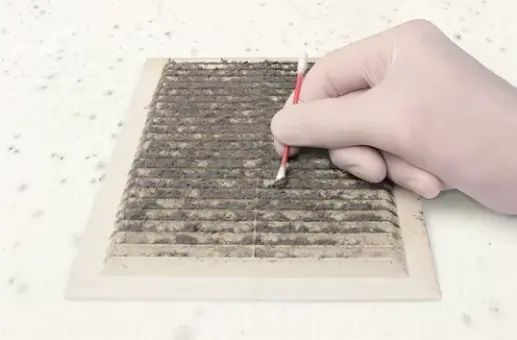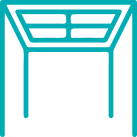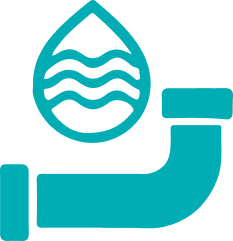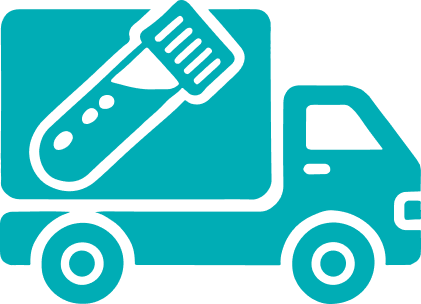Mold Surface Sampling
Mold surface sampling is an essential component of mold inspection, providing valuable information about the presence, type, and concentration of mold on surfaces within a property.

Surface Sampling
Precise mold testing on surfaces using advanced tools and methods.

Reliable Results
Supporting NY and NJ property owners with accurate remediation guidance.
"*" indicates required fields
Why Surface Sampling is Important?
Surface sampling is a targeted method for identifying mold growth on visible or suspected areas. Unlike air sampling, which measures airborne mold spores, surface sampling focuses directly on mold present on materials. This process is crucial for several reasons:
Identifying Mold Species
Determines the specific types of mold present, such as allergenic, pathogenic, or toxigenic species.
Assessing Surface Contamination
Measures the extent of mold growth on materials like drywall, wood, or furniture.
Guiding Remediation Efforts
Helps prioritize areas requiring immediate attention during mold remediation.
Confirming Remediation Success
Verifies that surfaces are free from mold contamination after remediation is completed.
Regulatory Compliance
Supports compliance with local and state mold-related health and safety regulations in NY and NJ.
Why Mold Surface Sampling is Conducted?
Surface sampling is conducted in a variety of scenarios to provide precise and actionable insights:
Visible Mold Growth: To confirm the type of mold present and assess the severity of contamination.
Post-Water Damage: To evaluate areas exposed to moisture and ensure mold has not developed.
Pre-Remediation Planning: To guide mold removal efforts by identifying contaminated surfaces that require immediate attention.
Post-Remediation Verification: To confirm that remediation efforts were successful and surfaces are free from mold.
Health Concerns: To identify potential toxigenic molds that may cause allergies, respiratory issues, or other health problems.

The Mold Surface Sampling Process
At PITS Environmental, our mold surface sampling process is designed for accuracy, efficiency, and thorough analysis. Here’s how the process works:
Initial Inspection
Our specialists perform a detailed walkthrough of the property to identify visible mold growth or areas with water damage. We evaluate surfaces for discoloration, staining, or texture changes that may indicate mold presence.
Sampling Preparation
The appropriate sampling method is selected based on the material type and suspected contamination. Surfaces are prepared to ensure accurate collection without disturbing mold spores unnecessarily.
Sampling Methods
- Tape Lift Sampling: A piece of adhesive tape is applied to the surface, capturing mold spores and particles for laboratory analysis.
- Swab Sampling: A sterile swab is used to collect mold samples from uneven or porous surfaces, such as grout or textured walls.
- Bulk Sampling: Small portions of the affected material, such as drywall or wood, are carefully removed and sent to the lab for analysis
- Wipe Sampling: A dampened wipe is used to collect samples from smooth or non-porous surfaces like countertops or tiles.
Sample Handling and Storage
All collected samples are sealed in sterile containers to prevent contamination. Each sample is labeled with precise location details and other critical information for tracking.
Laboratory Analysis
Samples are sent to an accredited laboratory where they are examined under a microscope to identify mold types and spore concentrations. Advanced techniques such as culture testing or DNA analysis may be used for detailed identification of mold species.
Reporting
We provide a comprehensive report detailing the findings, including the type of mold, its concentration, and the affected areas. Recommendations for remediation or preventive measures are included to address the identified issues.
Areas Commonly Tested for Mold
Our surface sampling services are suitable for a wide range of surfaces and materials, including:

Walls and Ceilings
Drywall, plaster, and painted surfaces are common sites for mold growth due to water intrusion.

Flooring
Carpets, tiles, and hardwood floors are inspected for mold caused by spills, leaks, or flooding.

Furniture and Upholstery
Mold can develop on furniture fabric and cushions, especially in high-humidity areas.

HVAC Systems
Air ducts, vents, and filters are sampled to detect mold that could spread through ventilation systems.

Bathroom and Kitchen Surfaces
Grout, tiles, and countertops are prone to mold in areas with high humidity and poor ventilation.
How Our Reports Help Customers
Our mold surface sampling reports are comprehensive and actionable, providing critical insights for property owners and managers. Each report includes:
01
Mold Identification
Detailed analysis of the mold species present, including their potential health impacts.
02
Extent of Contamination
Clear identification of affected areas and the severity of mold growth.
03
Recommendations
Practical guidance for mold remediation, prevention, and long-term monitoring.
04
Compliance Documentation
Reports meet regulatory standards and can be used as evidence for legal or insurance purposes.
Why Choose PITS Environmental?

Accredited Expertise
Our lab meets stringent standards, ensuring accuracy and reliability.

Advanced Technology
We utilize state-of-the-art instruments for precise analysis.

Tailored Solutions
Testing services customized to your specific agricultural needs.

Fast Turnaround
Timely results to help you make critical decisions without delay.
Reliable Water and Air Quality Testing Services
Protect your environment with our specialized water and air quality testing solutions, offering comprehensive analysis to detect contaminants, convenient sample collection, and on-site testing for immediate results. Contact us today to schedule a consultation or on-site visit and take the first step toward a healthier, safer environment!
Frequently Asked Questions
What are the signs of a mold problem?
Common signs include a musty odor, visible mold growth, water stains, or persistent allergic reactions such as sneezing, coughing, and eye irritation when indoors.
What causes mold growth?
Mold typically grows in areas with high humidity or moisture, such as basements, bathrooms, kitchens, and poorly ventilated spaces. Leaks, flooding, or condensation can also contribute to mold growth.
How is a mold assessment conducted?
We begin with a visual inspection, followed by air and surface sampling to identify mold species and contamination levels. Moisture mapping and detailed reporting are also part of the process.
What should I do if mold is detected?
If mold is found, our detailed report will provide recommendations for remediation. It’s crucial to address the source of moisture and consult professional remediation services to eliminate mold safely.
How often should I have a mold assessment?
We recommend assessments during property purchases, after water damage, or when signs of mold are evident. For high-risk properties or environments, annual checks are advisable.
Is mold testing necessary if I can see mold?
Yes, testing can identify the type and concentration of mold, which helps in determining the severity of the problem and the best remediation approach.
How long does the mold assessment process take?
The assessment typically takes 2-4 hours, depending on the property size and complexity. Results from mold testing are usually available within 3-5 business days.
Do you provide mold remediation services?
No, we specialize in assessment and testing. However, we can recommend trusted professionals for remediation.
Request a Test or Consultation
Your Environment, Our Priority – Fill out the form below, and our team will get back to you as soon as possible.
"*" indicates required fields





